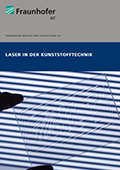
Machining processes in the field of plastics technology have wide-ranging requirements. The Fraunhofer Institute for Laser Technology ILT has developed and qualified customized processes through to turnkey production systems for welding, cutting, drilling, structuring and marking of plastics.
 Fraunhofer Institute for Laser Technology ILT
Fraunhofer Institute for Laser Technology ILT